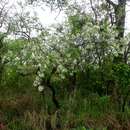en
names in breadcrumbs


Ehretia is a genus of flowering plants in the borage family, Boraginaceae. It contains about 50 species.[2] The generic name honors German botanical illustrator Georg Dionysius Ehret (1708–1770).[3]
Accepted species and other notable taxa[4]
†Ehretia europaea fossil seeds of the Chattian stage, Oligocene, are known from the Oberleichtersbach Formation in the Rhön Mountains, central Germany.[6] Endocarp fossils have been described from the Late Miocene locality of Pont-de-Gail in France and from the southern border of the Po Plain in northern Italy in two sites dated to the Zanclean and in three sites of supposed Zanclean age[7]
Ehretia is a genus of flowering plants in the borage family, Boraginaceae. It contains about 50 species. The generic name honors German botanical illustrator Georg Dionysius Ehret (1708–1770).